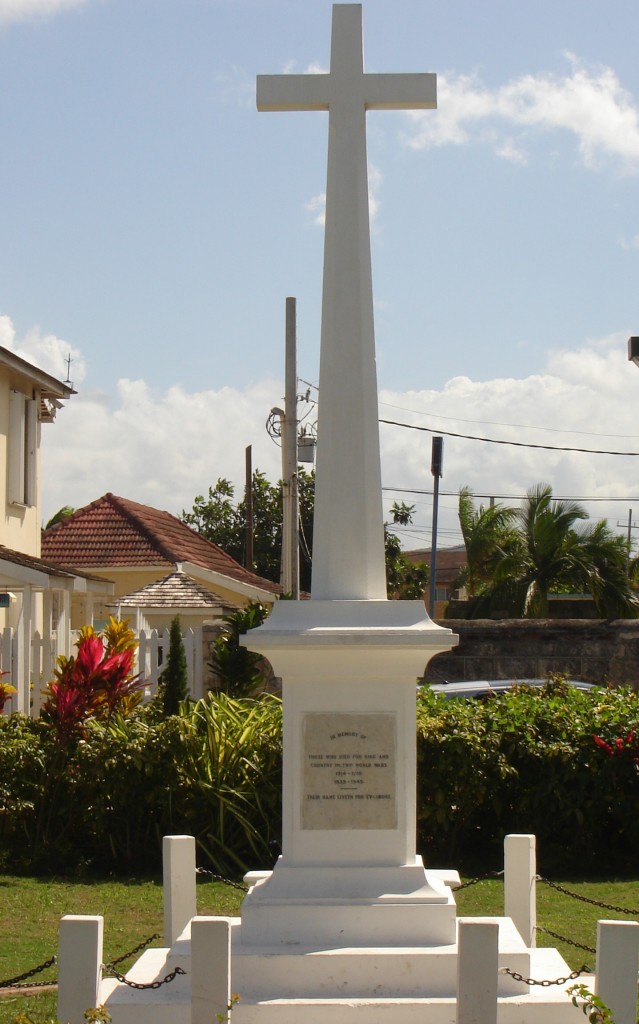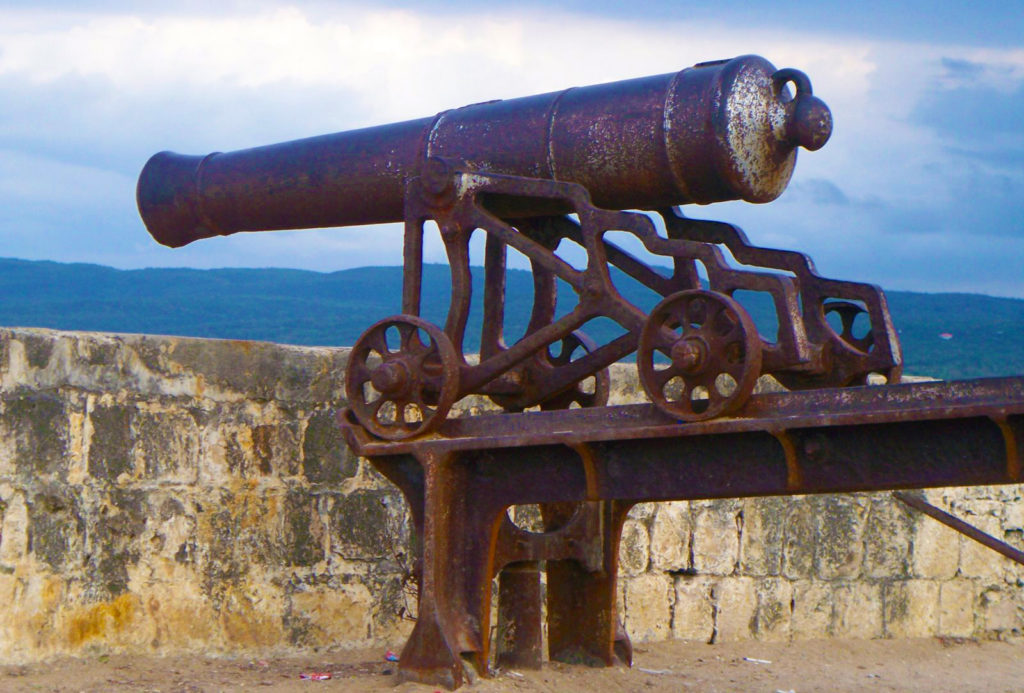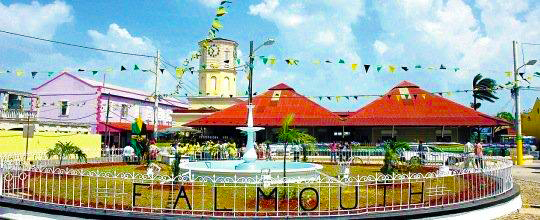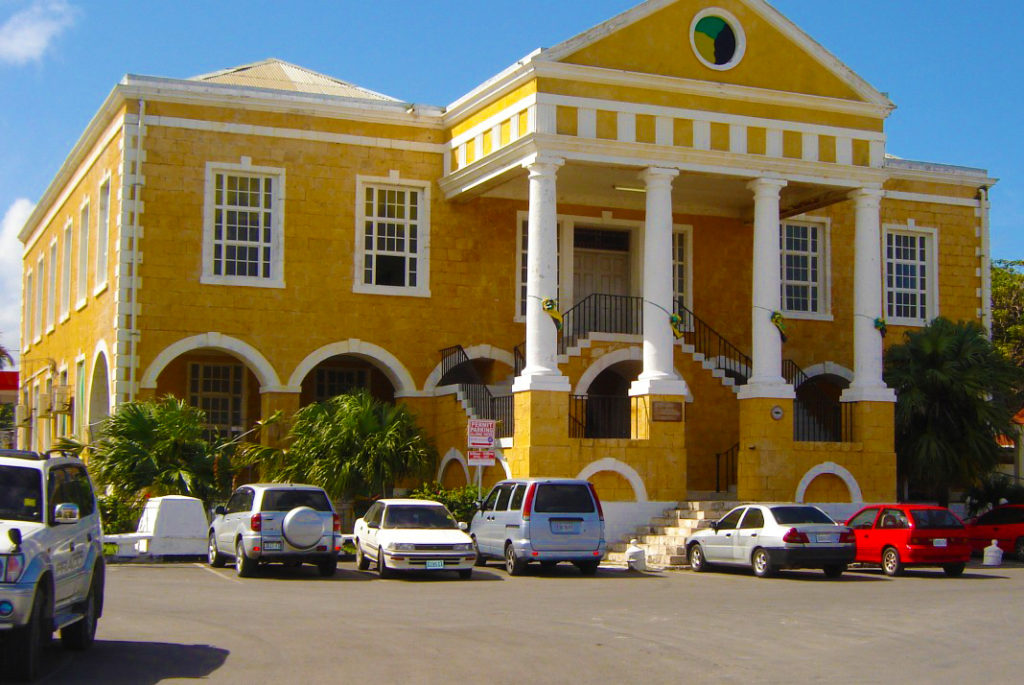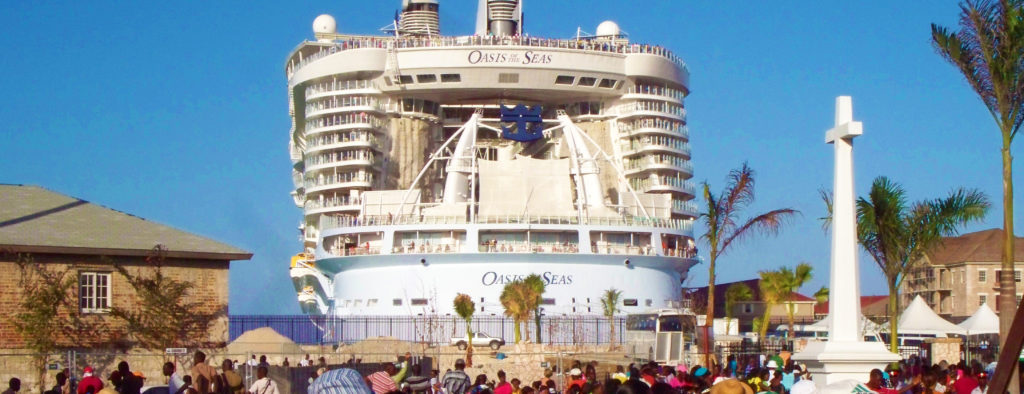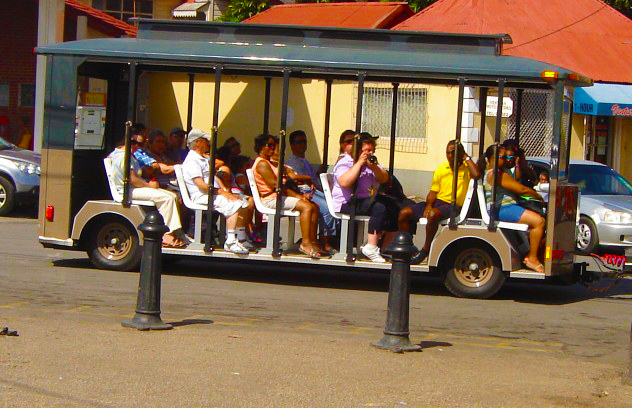The magnificent stone wall buildings and the carefully mapped out streets, tell the full story of the wealth and splendor of Falmouth over 200 years ago.
The great Parish Church with its stained glass windows and its medieval appearance displays the sophistication of the Georgian architecture imported from Britain. The courthouse, the William Knibb Baptist Church, the Albert George Market and many residential structures all showcase this common theme.
Falmouth boasts some past distinctions, one of which is the best laid out town in the Caribbean. Another is having fresh piped water before New York City, and yet another, is the once busiest shipping port and trading town in the world. The revival of this quaint capital of Trelawny has thrust its dormant past, right to the forefront of the historians’ priority.
Founded as Martha Brae Point in 1769 by an English cane planter named Thomas Reid, Falmouth was an integral part of the slave trade being the central hub back then. The economic success of pre-modern Falmouth was greatly dependent on the slave trade. Shipping activity was robust; as many as 30 ships daily could be seen in the harbor bringing cargo from overseas and slaves from Africa. They would then take sugar and rum back to Europe, after unloading these goods in Britain, the same ships would set out for Africa, picked up slaves, then sailed back to Jamaica.
– This old canon gun at the former army barracks was used to defend the town of Falmouth –
Falmouth attracted rich land owners and international traders who would meet to do business. It became home to masons, carpenters, tavern-keepers, mariners, planters and others. It was a wealthy town in a wealthy parish with a rich racial mix. Within the parish, almost a hundred plantations were actively manufacturing sugar and rum for export to Britain. Jamaica, during this period, became the world’s leading sugar producer.
– Falmouth Water Square before the Cruise Ship Port was built –
After the emancipation of slaves in the British Empire, Falmouth’s fortunes as a commercial center declined starting in 1840. This decline and lack of support for development has left many of its early buildings standing in disrepair. The streets are lined with many small houses known for their unique fretwork and windows. These buildings also consist of major merchant and planter complexes, and commercial buildings, all dating from 1790 to 1840. Falmouth saw little commercial advancement after the 1840’s, construction of houses continued.
Falmouth Now
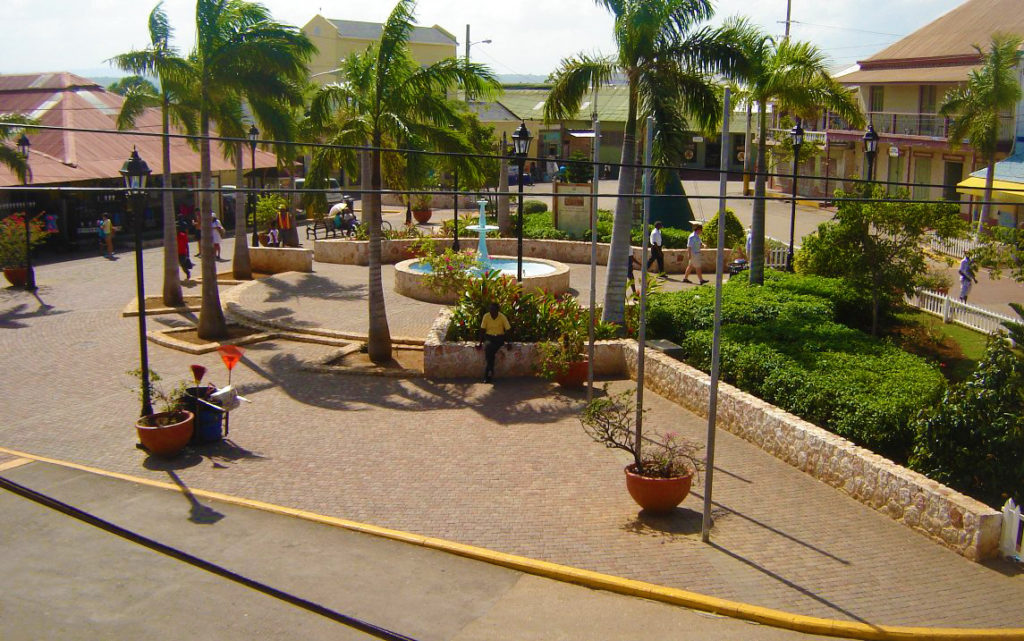 – Falmouth Water Square Today –
– Falmouth Water Square Today –
Falmouth took its name from a town called Falmouth in Cornwall, England, which was the birthplace of Sir William Trelawny, the Governor of Jamaica at the time. The main roads (King Street, Queen Street, St. Victoria Street, St. Rodney Street, St. George Street, Albert Street and Stanley Street) are named after English heroes of the era. The town’s buildings, the old and the little later constructions, make up the historic townscape of Falmouth. These shared characteristics weave the varied building styles into a distinctive pattern of early Jamaican architecture, and a critical mass of each variety make the town an unusually distinctive place.
The spirit of trading and merchandising resonates in Falmouth today, being the home of Jamaica’s largest trading market every Wednesday. This is called the “Bend Down Market.” Merchants and buyers from all over the Island would meet in the Falmouth Market to ply their wares and to seek bargains to stock their own stores elsewhere or for personal use. This is an experience that everyone must have to get a glimpse of what it was like back then.
As you enter the pedestrian Water Square, the Courthouse stands at attention to the north like a military guard on duty at the approach of his superior officer. The offices of the Parish Council, the Mayor’s office and the Resident Magistrate Court are all actively housed here. The arched windows of The Albert George Market, alternates with clock faces in the octagonal tower, which sitting on top of the building. A number of gift shops and other businesses now occupy this commercial space.
– The front of the Falmouth Courthouse facing the sea –
Falmouth has grown somewhat in these modern times with the creation of a residential community named Falmouth Gardens. There are three other much larger communities being built to the east and south of the town. A new Multipurpose Stadium was built recently, the second largest of four stadia in Jamaica. The remodeled fountain in the center of the town square is now an area of relaxation, informal group meetings and games. The aesthetics of the town center has been vastly improved which makes the area inviting to all.
Port of Call Falmouth
– The newly built Falmouth Cruise Ship Port –
– The inaugural voyage of the Oasis of the Seas to the newly built Falmouth Cruise Ship Port –
A US$180 million port was built to accommodate the newest and largest class of cruise ships, the Oasis Class which was opened in early 2011. This new port is built on the old shipping port and accommodates the two mega liner at the same time. The University of Technology has also opened a campus in Falmouth. The new Falmouth police station will soon be opened.
– Cruise passengers taking a tour of Falmouth –
We cannot complete this synopsis of Falmouth without highlighting the fact that Falmouth’s journey in worldwide fame continues even today, with Falmouth being the birthplace of the fastest man on the planet, the Honorable Usain Bolt.

